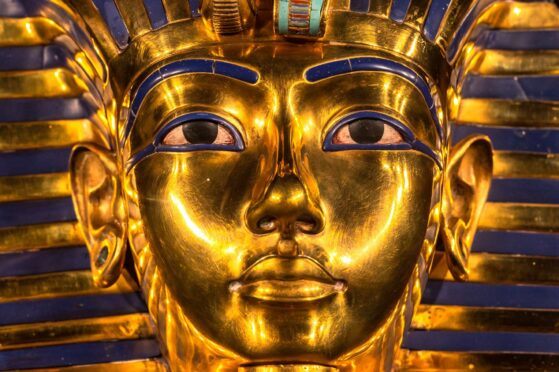
100 years ago, archaeologists made the amazing discovery of King Tutankhamun’s tomb yet, amid the hysteria, many stories about the young pharaoh were distorted or forgotten.
Author and Egyptologist Joyce Tyldesley tells Sally McDonald the Honest Truth about King Tut
Why is 2022 such an important year in the history of Tutankhamun?
This week will see the centenary of the discovery of the young pharaoh’s tomb. On November 4, 1922, an excavation team directed by British Egyptologist Howard Carter uncovered the steps leading to the tomb of Tutankhamun in the Valley of the Kings (near modern Luxor).
Although archaeological evidence suggested that the tomb had been partially robbed soon after the funeral, the mummified pharaoh still lay in a nest of golden coffins, surrounded by over 5,000 grave goods, ranging from statues of gods and precious jewellery to leather loincloths and parcels of food.
Why did you write this book?
The find sparked a world-wide wave of “Tut-Mania”, and Tutankhamun’s golden death mask quickly became the recognised “face” of ancient Egypt. However, there is far more to Tutankhamun than his death and burial. I wanted to take this opportunity to explore his life and reign, too.
Who was Tutankhamun, and how important was he?
Tutankhamun was born into the Egyptian royal family, the brother, son or grandson of the “heretic pharaoh” Akhenaten. He came to the throne as a child, and for 10 years was the richest and most powerful person in the Mediterranean world. He seemed set for a long and glorious reign but in 1327 BC, when he was just 18, he met his end. Mummified and buried in the Valley of the Kings, he was forgotten by his people.
What do we know about Tutankhamun’s family tree?
We have no written account of his parentage so we are forced to reconstruct his family tree using a combination of archaeological and scientific evidence. Archaeology shows us that he was born during the reign of Akhenaten. The fact that he was able to take the throne at just eight shows that that he was born royal. His father could be Akhenaten, or Akhenaten’s father Amenhotep III, or Akhenaten’s short-lived successor Smenkhkare. Experts are divided over this, with the majority accepting Akhenaten as the father.
What would the young pharaoh’s day-to-day life have been like?
Tutankhamun’s grave goods show that he was well dressed with a taste for elaborate, colourful clothing and expensive jewellery. He enjoyed playing board games – there are many gaming sets within his tomb – but was apparently less keen on music. The chariots, hunting and military equipment found within his tomb indicate that he led an active life, although some believe that his many sticks indicate that he had trouble walking.
When the tomb was discovered, why was it shocking to discover he had died a young man?
Before the discovery of the tomb, very little was known about Tutankhamun. He seemed to come from nowhere to take the throne. His wife, however, was the third daughter of King Akhenaten. So, it was assumed that Tutankhamun was a nobleman who married into the royal family and so claimed the throne via his royal wife. It was only when his body was discovered that it was realised that this theory was wrong.
What do we know about how the young pharaoh died?
We are not told anything about Tutankhamun’s death. However, we can see that his body is badly battered, and his heart is missing. We would normally expect his heart to be preserved. This suggests that Tutankhamun had already started to decompose before he was mummified. Combining these two threads of evidence, it seems highly likely that Tutankhamun died as the result of either an accident or, maybe, in battle. Some experts, however, believe that he may have been murdered!
Tutankhamun: Pharaoh, Icon, Enigma, published by Headline

Enjoy the convenience of having The Sunday Post delivered as a digital ePaper straight to your smartphone, tablet or computer.
Subscribe for only £5.49 a month and enjoy all the benefits of the printed paper as a digital replica.
Subscribe